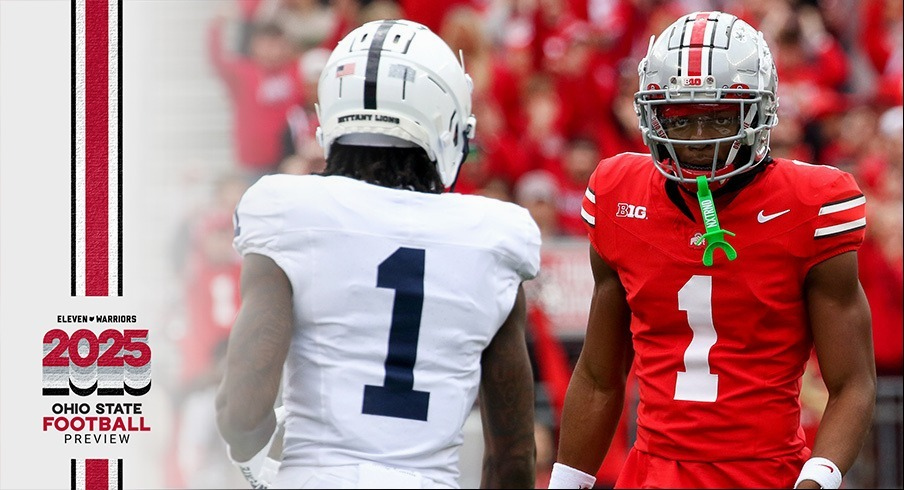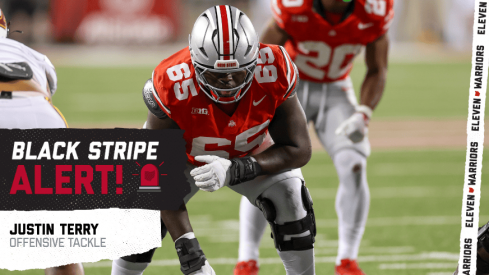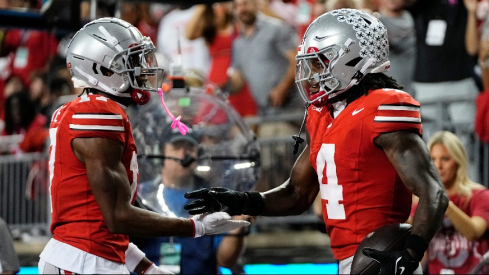Ohio State’s first six games in 2025 will test the Buckeyes in different ways, from a heavyweight showdown with Texas in the season opener to challenging Big Ten trips to Washington and Illinois. Ryan Day’s team will need to survive that gauntlet to stay on track for its goals.
But the second half of the season is no less demanding. In Part Two of our schedule breakdown, we preview Ohio State’s final six opponents — Wisconsin, Penn State, Purdue, UCLA, Rutgers and Michigan.
With road trips to Madison, West Lafayette and most importantly Ann Arbor, plus a top-ranked clash with Penn State inside Ohio Stadium, the Buckeyes’ closing stretch will determine the path required to repeat as college football national champions.
at Wisconsin (Oct. 18)
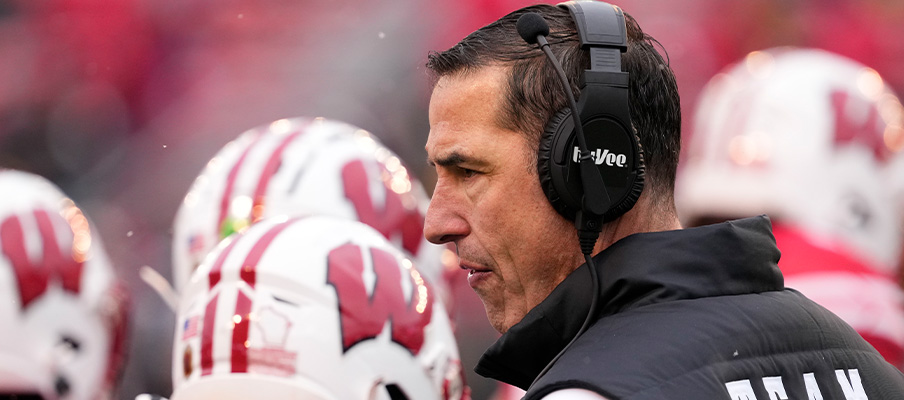
Luke Fickell’s tenure at Wisconsin has been… pick a word: Disappointing? Underwhelming? Poor?
In two seasons with the Badgers, Fickell has led the program to a 13-13 record, a disappointing, underwhelming and poor mark considering Fickell came to Madison after leading Cincinnati to the CFP in 2021 and a 9-3 record in 2022.
Fickell hopes to dig himself out from his snuffle hole this fall with a new offensive coordinator and an astonishing 22 transfers.
With Phil Longo off to Sam Houston State, Fickell hired Kansas’ Jeff Grimes to revitalize the Wisconsin offense. Grimes relies on a wide zone scheme that should resemble the Badgers of old — quarterbacks under center and running backs powering downhill behind big, beefy offensive linemen.
Wisconsin’s running backs might not be Ron Dayne, Melvin Gordon or Jonathan Taylor, but sophomore Darrion Dupree and freshman Dilin Jones will be full of youthful energy when lining up next to Maryland transfer quarterback Billy Edwards Jr., who threw for 2,881 yards, 15 touchdowns and nine interceptions for the Terrapins last season. Edwards will have a slew of transfer wide receivers at his disposal this fall, including Jayden Ballard (Ohio State) and Dekel Crowdus (Hawaii).
On defense, three defensive backs should anchor the unit: cornerback Nyzier Fourqurean — who is still looking for the NCAA to grant him eligibility — and transfers Geimere Latimer (Jacksonville State) and D’Yoni Hill (Miami). Fickell also landed a stellar Division III transfer, former Bethel safety Matt Jung, who collected 10.5 tackles for loss and 20 pass breakups in 2024.
In all, Wisconsin’s run game and secondary should make the Badgers an opponent the Buckeyes must respect in late October, especially with the game being wedged between Illinois and Penn State and played at Camp Randall Stadium.
Penn State (Nov. 1)
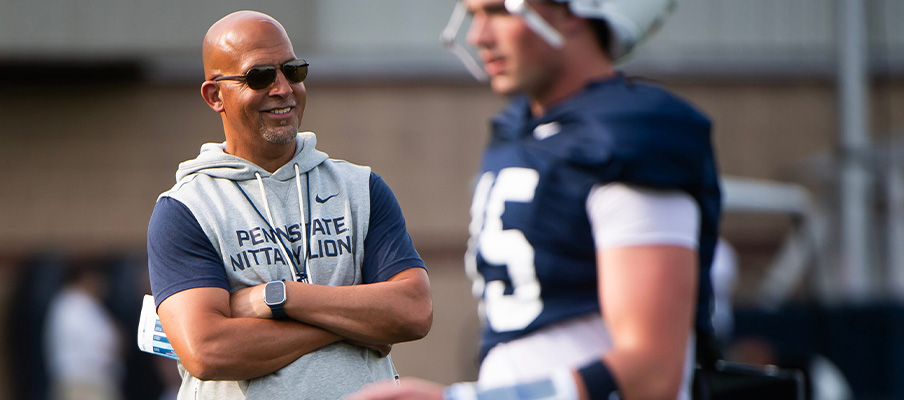
Ohio State vs. Penn State will be must-see TV on Halloween weekend.
What’s new?
This season, Penn State aims to win a national championship following the same model Michigan and Ohio State used in 2023 and 2024: maximizing a roster populated with returning veteran players.
To maximize the roster, James Franklin needs statement wins, something he’s lacked throughout his Penn State tenure — hence the nickname “Big Game James.” Over the past three seasons, the Nittany Lions are 34-2 as favorites and a perfect 27-0 when favored by a touchdown or more, but 0-6 as underdogs. In short, Franklin wins the games he’s supposed to and loses the ones he isn’t expected to win.
This season, Franklin hopes to change the narrative with two of college football’s best assistants in his corner: offensive coordinator Andy Kotelnicki and defensive coordinator Jim Knowles, who left Ohio State for Penn State in January, becoming the sport’s highest-paid assistant in the process.
During his first season in State College, Kotelnicki transformed Penn State’s offense from a top-30 unit to a top-10 unit. Three of his top contributors, quarterback Drew Allar and running backs Nick Singleton and Kaytron Allen, are back for more in 2025. While the Nittany Lions will miss top-15 pick Tyler Warren, Franklin and Kotelnicki hit the portal for three wide receiver upgrades – Trebor Pena (Syracuse), Kyron Hudson (USC) and Devonte Ross (Troy) – to soften the blow. Penn State also returns four starters on the offensive line, including an All-American candidate in guard Vega Ioane.
Knowles returned to his home state and immediately received a treasure chest of talent. His inheritance includes proven commodities: defensive linemen Dani Dennis-Sutton and Zane Durant (who combined for 24 tackles for loss and 11.5 sacks last season); linebackers Tony Rojas, Don DeLuca and North Carolina transfer Amare Campbell; and defensive backs A.J. Harris and Zakee Wheatley.
With the nation’s best on the field and in the booth, Penn State’s trip to Ohio Stadium is more than a regular-season measuring stick. It’s a chance to change the perception that has hung over the program for the past decade: A perennial top-10 team that churns out NFL talent but stumbles in big games.
A win inside the Horseshoe would mark Penn State’s first in Columbus since 2011 and serve as a defining moment for a roster built to contend for a national championship. A loss, however, would continue a familiar narrative — that Penn State is good enough to compete with the best, but not great enough to beat them when it matters most.
at Purdue (Nov. 8)
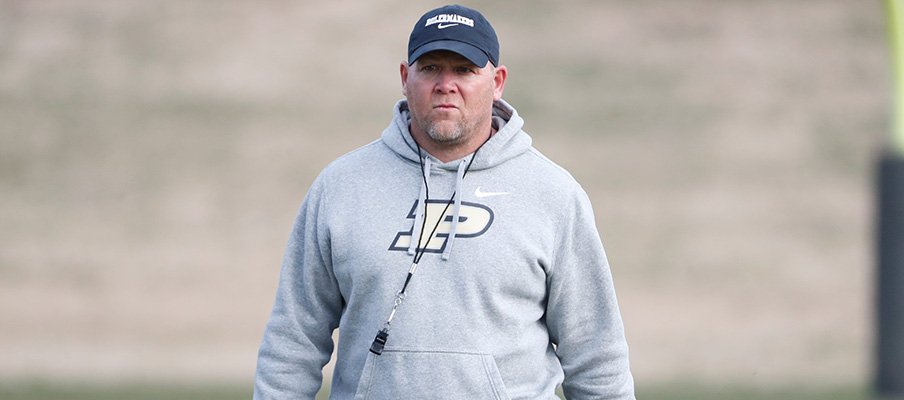
The next three opponents — Purdue, UCLA and Rutgers — could be combined into one section like Grambling and Ohio were in Part 1. However, we will provide individual breakdowns for them due to their Big Ten membership.
Kicking off the three-week tune-up for The Game is Purdue, one of the worst teams in college football last season and, probably, one of the worst teams in college football this season.
Purdue fired Ryan Walters after two seasons with the program, in which he went 5-19. The Boilermakers brought in Barry Odom to be their next conductor, hoping he can toss some coal into the firebox.
In 2023, Odom took over at UNLV, a school that had one winning season in 22 years, and immediately overhauled the roster to win nine games. The following year, he attacked the transfer portal even harder and won 11.
After Purdue’s 1-11 season in 2024, 50 players hit the transfer portal; therefore, Odom had to rebuild from scratch — and he did, pulling in transfers of every size and shape.
Quarterbacks Malachi Singleton (Arkansas) and Evans Chuba (Washington State), wide receiver Nitro Tuggle (Georgia), offensive tackles Jalen St. John (UNLV) and Jude McCoskey (Indiana State), defensive ends Mani Powell (UNLV) and Breeon Ishmail (Michigan State), defensive tackle Josh Burney (Fort Valley State), linebacker Sanders Ellis (Tennessee State) and cornerback Tony Grimes (UNLV) are just a sample. That’s less than 20 percent of the haul.
Odom’s only returning player of significance is running back Devin Mockobee, who recorded 687 yards and four touchdowns on 138 attempts last season. In three years with the Boilermakers, Mockobee has 505 carries for 2,466 yards and 19 scores.
With this much turnover, it’s hard to imagine Odom replicating his immediate success in Las Vegas. Still, if the Boilermakers can scrap their way to three or four wins, that might feel like a breakthrough in West Lafayette.
UCLA (Nov. 15)
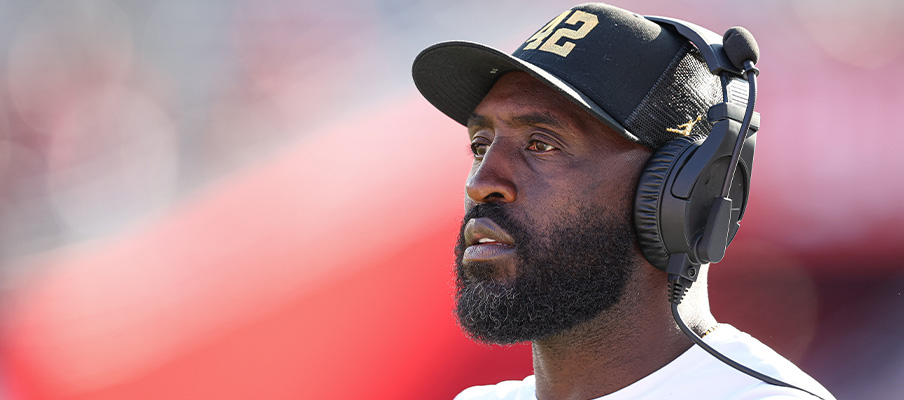
UCLA is in Los Angeles, and its football coach is DeShaun Foster.
Those are about the only things that didn’t change for the Bruins this offseason.
After going 5-7 in his first year, Foster overhauled nearly every position group. He hired a new offensive coordinator, Tino Sunseri, and brought in quarterback Nico Iamaleava (Tennessee), running back Jaivian Thomas (Cal), receiver Kaedin Robinson (App State) and four new offensive linemen. On defense, he added 10 — yes, 10 — defensive backs, headlined by Benjamin Perry (Louisville), Jamier Johnson (Indiana), and Andrew Jordan Jr. (Oregon State), plus six new defensive linemen, with edge rusher Isaiah Chisom (Oregon State) being the most notable name.
With that many new faces, chemistry will be a work in progress — but UCLA’s ceiling in 2025 likely depends on how quickly its new quarterback can settle in. Foster didn’t bring in Iamaleava just to manage games; he brought him in to win them, especially the ones few expect the Bruins to take.
If UCLA hopes to upset Ohio State in Columbus, Iamaleava must outperform his 2024 debut at the Horseshoe — when, in his final game for Tennessee before a drama-filled exit, he completed just 45.2 percent of his passes for 104 yards while adding 47 yards and two touchdowns on the ground. The 6-foot-5 quarterback is capable of more; last season, his first as a full-time starter, he completed 63.8 percent of his throws for 2,616 yards, 19 touchdowns and five interceptions across 13 appearances.
Rutgers (Nov. 22)
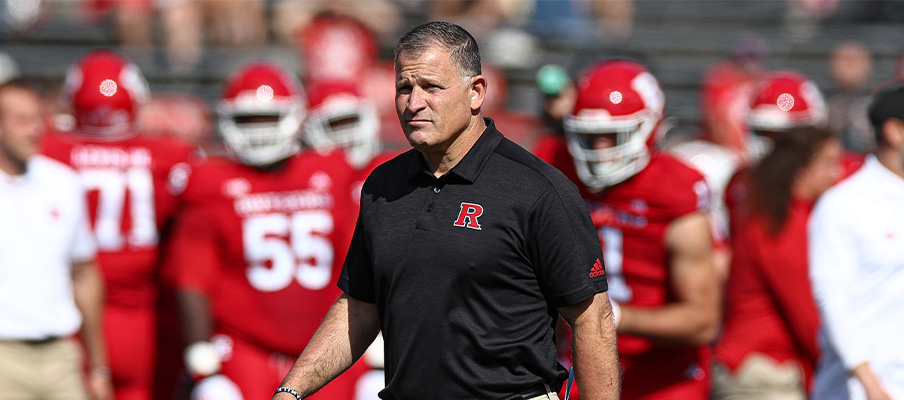
No man coaches Rutgers better than Greg Schiano. In 17 years with the Scarlet Knights, Schiano has a 94-101 record. It doesn’t seem that great — but remember, it’s Rutgers.
According to ESPN's Bill Connelly, Rutgers ended 2024 with its best offense in 10 years but also its worst defense in five years.
Kirk Ciarrocca’s offense managed to avoid negative plays and penalties at an impressive rate last season, and Rutgers hopes to leverage that into more victories this fall. Veteran quarterback Athan Kaliakmanis returns after completing 53.9 percent of his passes for 2,696 yards, 18 touchdowns and seven interceptions in 2024. Joining him as returning starters are four offensive linemen (plus four transfers with significant experience) and two receivers, 6-foot-3 Ian Strong and 6-foot-6 KJ Duff. Ciarroca will need a new running back with first-team All-Big Ten honoree Kyle Monangai off to the NFL, but backups Antwan Raymond and Samuel Brown V should fill his shoes well, as should Florida Atlantic transfer CJ Campbell Jr.
Schiano has new co-defensive coordinators in 2025: Robb Smith and Zach Sparber. The duo should transition into their roles well, considering Rutgers’ impressive number of veterans, including returning linebackers Dariel Djabome and Moses Walker and transfer defensive backs Jacobie Henderson (Marshall), Jett Elad (UNLV) and Cam Miller (Penn State).
Two more transfers should stand out for the Scarlet Knights this season, defensive linemen Eric O’Neill (James Madison) and Bradley Weaver (Ohio), who had a combined 38.5 tackles for loss last season. Throw defensive tackles Doug Blue-Eli (USF) and Darold DeNgohe (James Madison) into the conversation, and one could argue Rutgers has one of the best defensive transfer classes in the nation.
Does that mean Rutgers is a threat to beat Ohio State in 2025?
No.
But the Scarlet Knights will be interesting nonetheless!
at Michigan (Nov. 29)
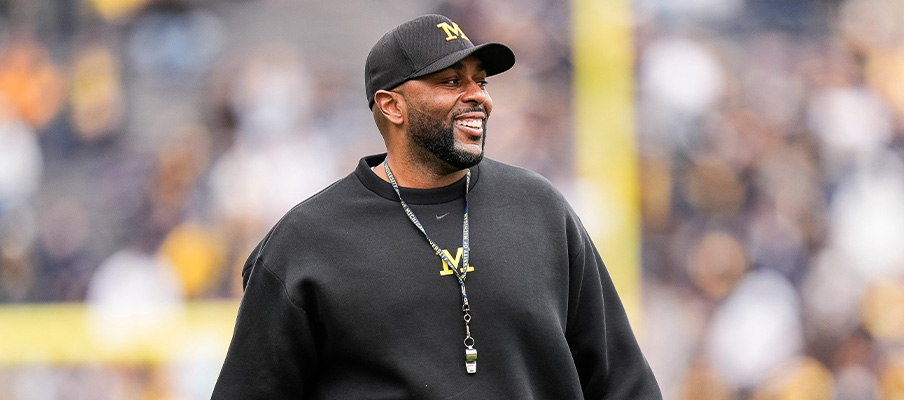
When Ohio State plays Michigan on Nov. 29, it will have been 2,191 days since the Buckeyes last won The Game. To snap the streak, Ryan Day must topple a Wolverine team that won’t be as dominant as the 2023 national champions — but also not as ordinary as last year’s ReliaQuest Bowl winners.
Either five-star freshman Bryce Underwood or Fresno State transfer Mikey Keene will start the season at quarterback for Michigan, though it’s hard to imagine the $12 million signal-caller will watch from the sidelines all season. Joining Underwood (or Keene) on offense will be a number of intriguing transfers: running back Justice Haynes (Alabama), wide receiver Donaven McCulley (Indiana) and offensive linemen Brady Norton (Cal Poly) and Lawrence Hattar (Ferris State).
On defense, first-round tackles Mason Graham and Kenneth Grant are gone, but the interior defensive line should still be a strength with transfers Tre Williams (Clemson) and Damon Payne (Alabama) as well as returners Rayshaun Benny and Ike Iwunnah. So, too, will the linebacker corps, which returns Ernest Hausmann and Jaishawn Barham on the inside and Derrick Moore and TJ Guy on the outside.
If there’s a concern with Michigan defense, it’s in the secondary, where head coach Sherrone Moore and defensive coordinator Wink Martindale must replace five of last season’s top seven players, including second-round cornerback Will Johnson. Rod Moore returns following a season-ending ACL tear in last year’s preseason camp. The Wolverines also added transfer TJ Metcalf (Arkansas) and hope to see junior cornerback Jyaire Hill take a step forward in year two.
In short, Ohio State can beat Michigan in 2025. Then again, the Buckeyes could have beaten the Wolverines in 2024 but fell 13-10 in their own stadium, proof that Ohio State’s struggle in The Game might stem less from matchups and more from mental toughness.
To regain control of the rivalry, Ohio State must march into Ann Arbor and pry it from Michigan’s hands. In the Big House, excuses won’t hold — only results. Anything less, and the balance of the rivalry will remain tilted toward the Wolverines.
